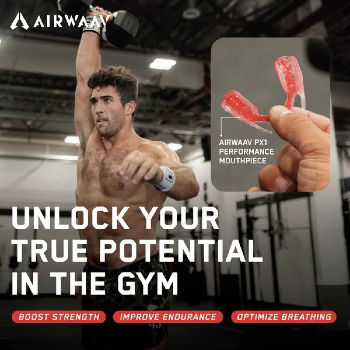Forget Funnels Think Loops
🎬 How to Replace Linear Journeys with Loops of Emotional Recall, Gen Z Isn’t Googling—They’re Searching Social, and more!


Howdy readers 🥰

In this newsletter, you’ll find:
🎬 Forget Funnels Think Loops: How to Replace Linear Journeys with Loops of Emotional Recall
📱 Gen Z Isn’t Googling—They’re Searching Social
🏆 Ad of the Day
If you’re new to ScaleUP, then a hearty welcome! You and 50k+ CEOs, CMOS, and marketers have reached the right place. Let’s get into it, shall we? Oh! Before you forget, if someone forwarded this newsletter to you, don't forget to subscribe to our newsletter so you never miss out!

Together with Neurons
Will people remember your ads? Find out before you go live
Creating attention-grabbing ads is one thing. But making ads people actually remember?
Neurons AI helps you out with both.
Predict how your ads will perform before launch, measure whether your audiences remember your ad days after seeing it, and if it evokes positive emotions.
In other words, before spending a cent on your campaign, you get:
- Instant, actionable recommendations to improve your creatives.
- Memory and engagement estimations.
- Overview of how engaging each element of your creative is.
- Suggestions that can boost performance, based on insights from thousands of campaigns.
It gives you quick, actionable recommendations to improve your creatives and maximize your ad impact. Run A/B tests before launch and tweak your visuals for maximum brand impact.
Major brands like TikTok, L'Oreal, and Google are seeing up to 73% boosts in CTR and 20% jumps in brand awareness.
Get Neurons & Start Improving Your Ads Today!

🎬 Forget Funnels Think Loops: How to Replace Linear Journeys with Loops of Emotional Recall
The funnel is outdated. It assumes people move in steps—awareness to interest to decision. But DTC buyers don’t behave that way. They zigzag, backtrack, and get influenced by moments—not stages.
Smart brands don’t push users down a path. They drop scenes into memory—emotionally-charged, self-contained moments that replay later when it’s time to buy.
🧠 Why Funnels Fail and Scenes Stick
Real purchase decisions aren’t linear—they’re episodic. A product seen in a TikTok scroll. A headline remembered days later. A sound, a slogan, a feeling. These fragments don’t need order—they need emotional stickiness.
When Feastables moved from polished promo to raw, character-led TikToks, they saw a 42% lift in branded search and 3.1x higher ad recall—because the moments weren’t steps. They were scenes.
How to Build a Scene-Based Creative Strategy
1. Design Ads as Standalone Scenes
Treat each ad like a movie scene: evoke a single emotion, make a visual imprint, and don’t rely on what came before or after.
• Think: “relatable pain” or “unexpected delight” → not “step 2 in the funnel.”
• Some scenes convert. Others plant the seed.
2. Trigger Emotional Replay
Memory is built on emotion + contrast. Sequence visuals to disrupt autopilot: an unexpected line, a sudden color change, a moment of silence.
Use tools like Neurons to test which moments anchor memory. Get Neurons & Start Improving Your Ads Today!
3. Create a Cast, Not Just a Product
Brand recall compounds when users see the same character, motif, or voice across creatives.
• Think: Liquid Death’s grim reaper, Duolingo’s owl, or Olipop’s vibrant retro aesthetic.
• These aren’t just ads—they’re brand memory anchors.
4. Build Scene-to-Scene Recall Loops
Your PDP should echo your TikTok. Your email should reflect your Meta carousel.
Scene-linking multiplies recognition and builds trust through subconscious recall.
Brands using character-driven omnichannel creative saw up to 63% stronger aided recall in a recent Meta Brand Lift study.
Funnels are for logic. Scenes are for memory. And people buy from what they remember—especially when it feels like it’s been with them all along.
Start creating moments that stick, not journeys that assume.

📱 Gen Z Isn’t Googling—They’re Searching Social
Insights from SEL
Gen Z is rewriting the rules of search. Instead of turning to Google, they’re heading to TikTok, YouTube, Instagram, Reddit, and Discord for everything from product reviews to how-to guides. For brands and marketers, visibility now means showing up in the platforms Gen Z actually uses.
The Breakdown:
- Social Search is Surging - Google usage is down 25% among Gen Z compared to Gen X (Forbes, 2024), and 46% of Gen Z prefer searching via social platforms over traditional engines (eMarketer). They’re not just browsing—they’re actively discovering, evaluating, and deciding—all without leaving TikTok or Reddit.
- Faster, Visual Results Win - Raised on short-form video and visual content, Gen Z expects instant, engaging answers. TikTok tutorials and YouTube Shorts replace blog posts. A single search like “best foundation” surfaces real reviews, demos, and side-by-side comparisons—faster than reading an article.
- Authenticity Over Ads - Gen Z doesn’t trust polished marketing. They value real user content, creator reviews, and peer feedback. A TikTok vlog or Reddit thread feels more genuine than a blog with affiliate links. Community voices beat brand claims every time.
- Algorithms Drive Discovery - On platforms like TikTok, Instagram, and Discord, relevant content finds users before they search. Gen Z is introduced to products and trends through algorithmic suggestions—shifting discovery earlier in the buyer journey and blending inspiration with intent.
If you're only focusing on Google SEO, you're missing Gen Z. To stay relevant, marketers must adapt to social-first search habits by building native content for TikTok, YouTube, Reddit, and more. Search is no longer about links—it’s about being part of the conversation.

🎥 Ad of the Day

What Works:
The tagline "Unlock Your True Potential in the Gym" taps directly into self-actualization psychology, often used in fitness marketing. It aligns with motivational framing—not just selling a product, but selling the idea of becoming the best version of yourself.
Including a close-up of the AIRWAAV PX1 mouthpiece subtly educates the viewer without disrupting the action hero narrative. It uses dual imagery to drive both product awareness and aspirational identity simultaneously.
What Could be Better:
For a product in a science-meets-performance niche, there's no signal of clinical study, biomechanics endorsement, or even “doctor/trainer recommended.”
Broader Insights:
Given how niche and performance-driven this product is, partnering with micro-fitness creators or CrossFit athletes and turning their testimonials into vertical-first reels or TikToks could significantly outperform static creative like this.
The ad is clearly speaking to high-intent gym goers or athletes. This isn't for the average fitness hobbyist—it's targeting the 2% looking for performance edge tools. Smart, but narrow.

Advertise with Us
Wanna put out your message in front of over 50,000 best marketers and decision makers?

We are concerned about everything DTC and its winning strategies. If you liked what you read, why not join the 50k+ marketers from 13k+ DTC brands who have already subscribed? Just follow this.
At ScaleUP, we care about our readers and want to provide the best possible experience. That's why we always look for ways to improve our content and connect with our audience. If you'd like to stay in touch, be sure to follow us EVERYWHERE🥰
Thanks for your support :) We'll be back again with more such content 🥳

